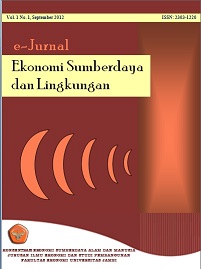Peluang dan strategi pengurangan emisi di Kawasan Delta Mahakam, Kalimantan Timur
DOI:
https://doi.org/10.22437/jels.v9i3.12331Abstract
Mahakam Delta area which functions as a Permanent Production Forest has abundant forest resources. However, there is a lack of management of the Mahakam Delta forest area which causes degradation and of mangrove forests to fish and shrimp ponds. This study aims to provide a rational, measurable, efficient and effective conceptual framework for exploiting mangrove forest resources by taking into account the socio-economic business aspects, emission reduction, local community culture and the preservation of mangrove forests in the Mahakam Delta area to achieve independent management of the Mahakam Delta. The method used in this study is Action Learning in which business plan concepts are introduced by promoting the principle of emission reduction to representatives of the KPHP Delta Mahakam. The results show the need for several improvements and strategies to resolve the Mahakam Delta problem, such as resolving pond conflicts, fostering and monitoring the Mahakam Delta area, synergies with related stakeholders, and optimal utilization of forest potential.
Keywords: Business Strategy, Mahakam Delta, Production Forest, Emission
Downloads
Downloads
Published
How to Cite
Issue
Section
License
Copyright (c) 2020 Mohamad Fitriady Helfian Hutami, Syahruni Ahmad, Ridwan Ridwan, Mamduh Fikri, Yuyun Kurniawan, Ellyn K. Damayanti, Muhammad Ridwansyah

This work is licensed under a Creative Commons Attribution-ShareAlike 4.0 International License.


